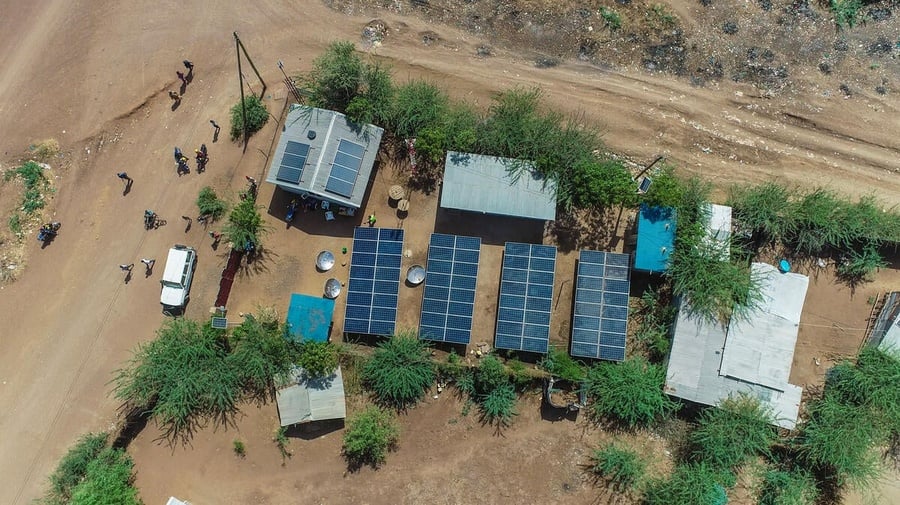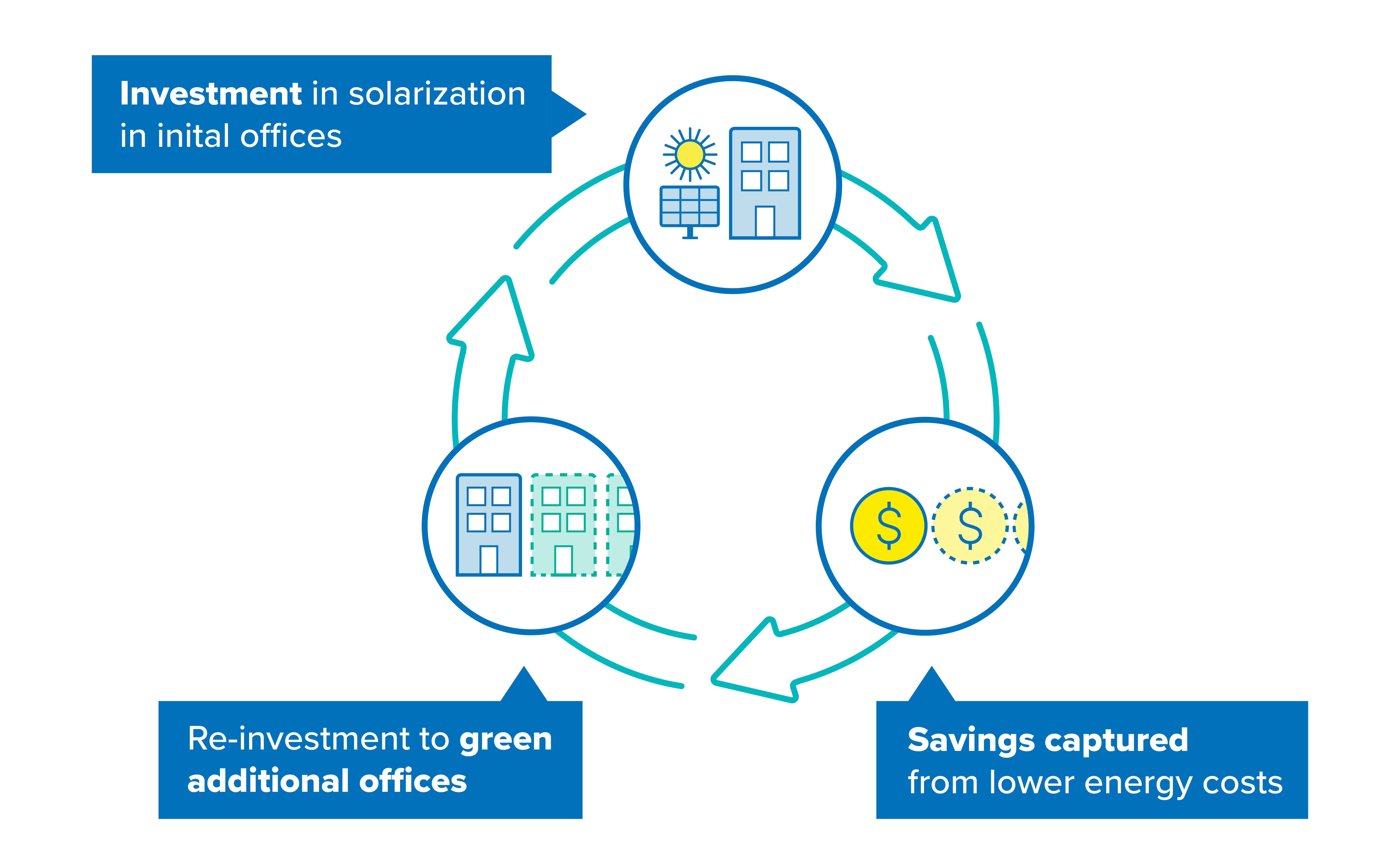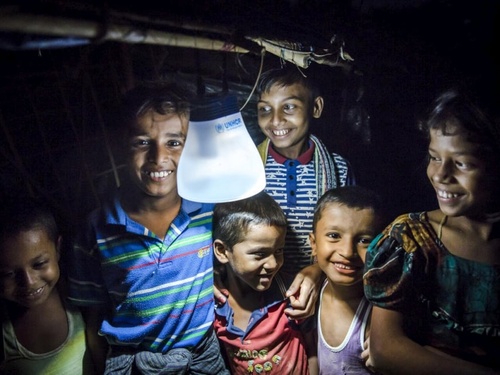Green Financing Facility
Green Financing Facility

The challenge: The high carbon footprint of responding to refugee needs globally.
UNHCR’s mandate is to serve over 100 million forcibly displaced and stateless people as well as their host communities, which often means working in areas without a stable grid connection and with high-security needs, making the use of fossil fuels a practical necessity. As a result, UNHCR’s operations generate direct annual emissions of over 50,000 metric tonnes of CO2 equivalent (tCO2eq), chiefly generated by office infrastructure, followed by the vehicle fleet and air travel.

The vision: A green UNHCR
Despite the challenge of operating in the most remote areas of the world, UNHCR’s vision is to become the leading humanitarian agency in environmental sustainability.
To achieve this vision, UNHCR aims to transform its infrastructure, along with fleet and travel, to minimize its environmental footprint and enable green solutions, while continuing to adhere to the highest standards of refugee protection and response.
The solution: The Green Financing Facility
As infrastructure is one of the main contributors to UNHCR’s environmental footprint, a key focus is to transition offices that run on diesel generators and fossil-fuel-heavy energy grids to solar energy. The Green Financing Facility is an innovative financing project that support UNHCR offices with this transition, utilizing tailored approaches for larger and smaller offices.
For larger offices: Green utility model
By utilizing a guarantee-based mechanism, UNHCR is 60% more efficient in using donor funding compared to the traditional pure grant-based model.

UNHCR Green utility model
For smaller offices: Green ownership model
UNHCR is creating a self-sustaining revolving fund model, which allows savings from greening to be reinvested.

UNHCR Green ownership model
Key impact areas

UNHCR will be able to capture cost savings from solarization. For some sites, switching to solar will have a positive financial impact and reset UNHCR's energy costs to a permanently lower level. These savings will be reinvested in UNHCR's budget and redirected towards direct refugee and host community programming.

This project will create long-term, durable, clean infrastructure in areas with some of the highest infrastructure and energy deficiencies in the world, replacing short-term and polluting diesel generators historically favoured by humanitarian operations with lasting clean energy solutions. In most cases, the new green infrastructure can also be passed to local governments after UNHCR ceases operations in the location.

UNHCR will issue millions of dollars of viable private sector contracts through competitive procurement for solar power plants in places that typically do not have viable business cases for clean energy. In this way, UNHCR facilitates development of the clean energy sector, including the secondary effect of creating green jobs in the local area and becoming the foundational anchor client in locations where currently private sector hesitates to invest.

By creating commercial opportunities that require jobs, such as the operation and maintenance of community infrastructure and solar systems, UNHCR will incentivize private sector companies to employ people locally in areas hosting forcibly displaced and stateless people. Experience to date has demonstrated that these procurements will be impactful in creating business opportunities for companies from developing countries and not just international companies.
The need
Kickstarting UNHCR’s green transformation requires a $60 million green investment to switch all offices to primarily renewable energy by 2030. This one-time green investment will be managed by the Green Financing Facility as a long-term capital fund that will finance all future greening needs.
To solarize the highest-emitting offices, accounting for 80% of UNHCR’s infrastructure emissions, we have secured investments of $36 million.
To cover the remainder of UNHCR’s greening needs, a further $24 million donor funding is needed.
This once-off investment will support around $115 million of green capital expenditure over 10 years. Over 20 years, the same capital will continue to work, supporting $150 million of renewable energy assets without the need for additional donor funding.
Contact us
For more information, or to support the facility please contact:
- Dominic Grace
Head of Global Mobility & Infrastructure: [email protected] - Juan Blanco
UNHCR Innovative Finance Fundraising Officer, [email protected] - Greening and Sustainability Team: [email protected]

